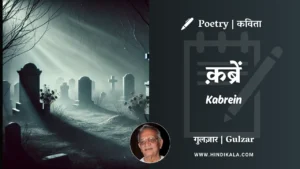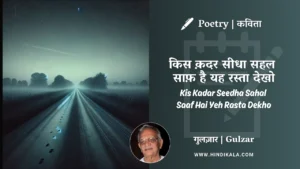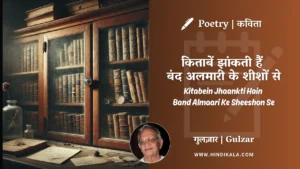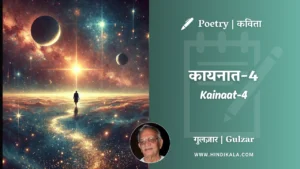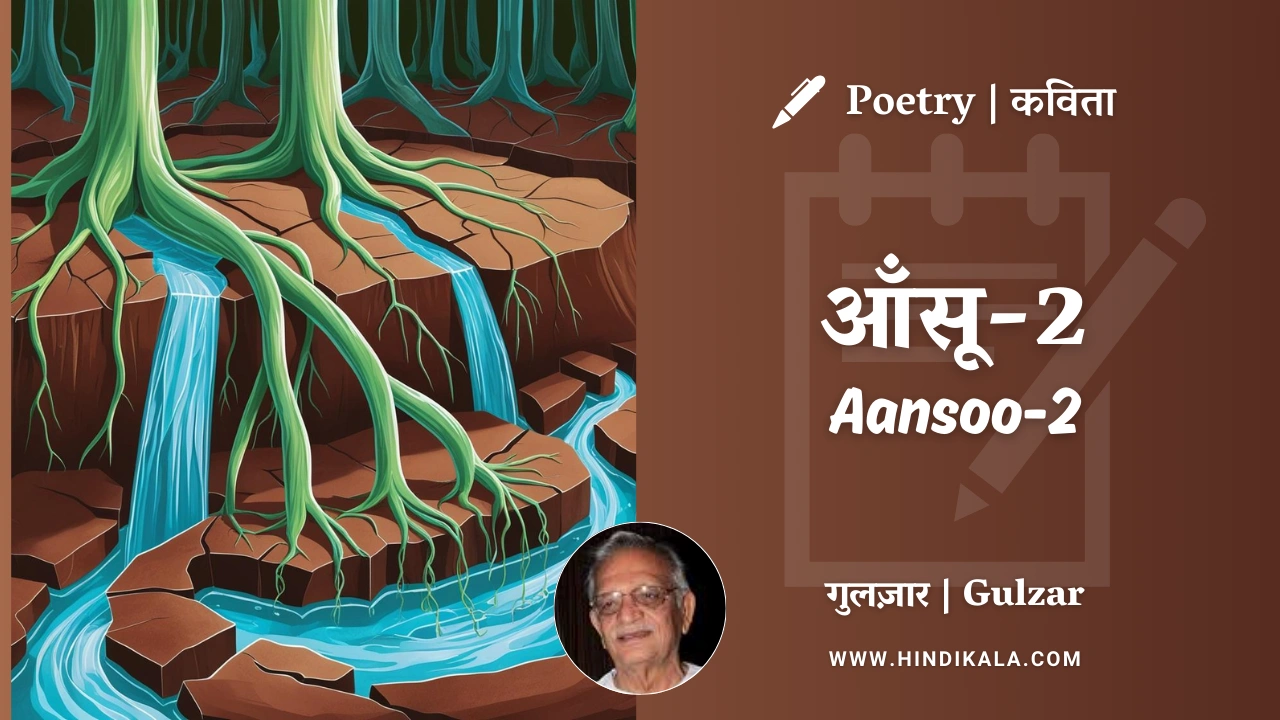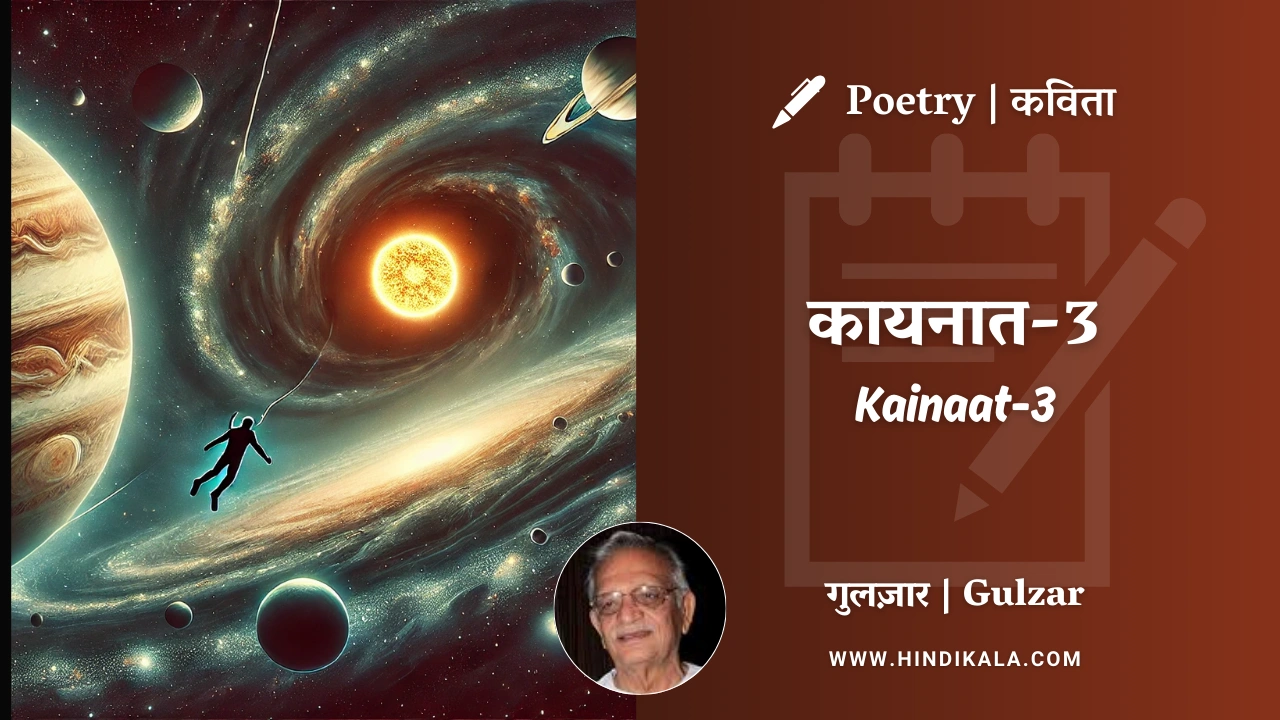Gulzar Poetry Kis Kadar Seedha Sahal Saaf Hai Yeh Rasta Dekho in Hindi & English with Meaning (English Translation) | गुलज़ार – किस क़दर सीधा सहल साफ़ है यह रस्ता देखो
Hindi Kala presents Gulzar Poetry Kis Kadar Seedha Sahal Saaf Hai Yeh Rasta Dekho about a path in Hindi & English with the poem’s Meaning (English Translation).
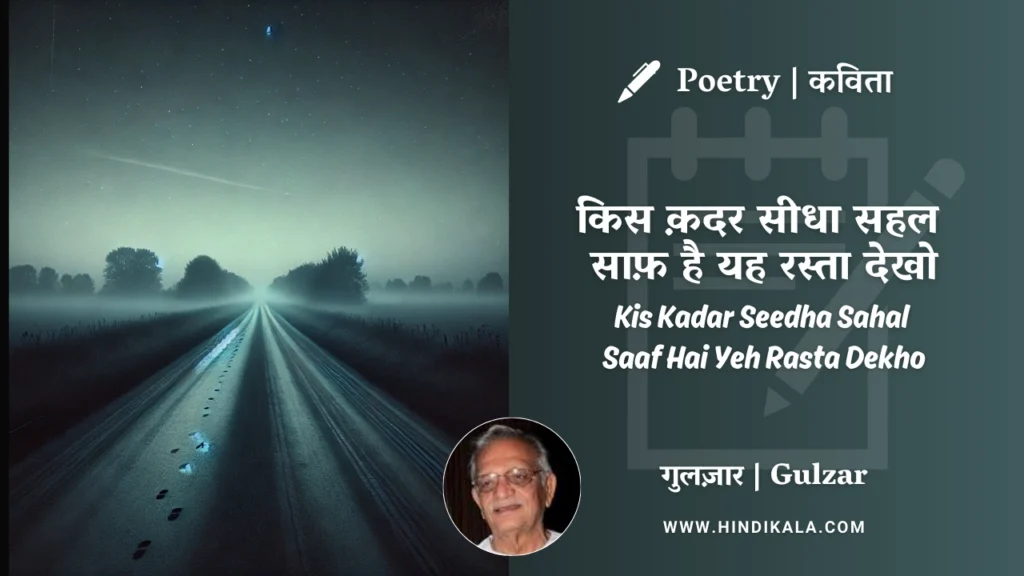
गुलज़ार की कविता किस क़दर सीधा सहल साफ़ है यह रस्ता देखो
किस क़दर सीधा सहल साफ़ है यह रस्ता देखो
न किसी शाख़ का साया है, न दीवार की टेक
Ìन किसी आँख की आहट, न किसी चेहरे का शोर
न कोई दाग़ जहाँ बैठ के सुस्ताए कोई
दूर तक कोई नहीं, कोई नहीं, कोई नहीं
चन्द क़दमों के निशाँ, हाँ, कभी मिलते हैं कहीं
साथ चलते हैं जो कुछ दूर फ़क़त चन्द क़दम
और फिर टूट के गिरते हैं यह कहते हुए
अपनी तनहाई लिये आप चलो, तन्हा, अकेले
साथ आए जो यहाँ, कोई नहीं, कोई नहीं
किस क़दर सीधा, सहल साफ़ है यह रस्ता
Gulzar Ki Kavita Kis Kadar Seedha Sahal Saaf Hai Yeh Rasta Dekho in Roman Transcript
Kis Kadar Seedha Sahal Saaf Hai Yeh Rasta Dekho
Na Kisi Shaakh Ka Saya Hai, Na Diwaar Ki Tek
Ņa Kisi Aankh Ki Aahat, Na Kisi Chehre Ka Shor
Na Koi Daag Jahaan Baith Ke Sustaye Koi
Door Tak Koi Nahi, Koi Nahi, Koi Nahi
Chand Kadmon Ke Nishan, Haan, Kabhi Milte Hain Kahin
Saath Chalte Hain Jo Kuchh Door Faqat Chand Kadam
Aur Fir Toot Ke Girte Hain Yeh Kahte Hue
Apni Tanhai Liye Aap Chalo, Tanha, Akele
Saath Aaye Jo Yahaan, Koi Nahi, Koi Nahi
Kis Kadar Seedha, Sahal Saaf Hai Yeh Rasta
Gulzar Hindi Poetry Kis Kadar Seedha Sahal Saaf Hai Yeh Rasta Dekho Meaning (English Translation)
How straight, simple and clear this path is
There’s no shade of a branch, no support of a wall
No sound of an eye, no noise of a face
No stain where anyone can sit and rest
Far and wide there’s no one, no one, no one
There are footprints, yes, sometimes found somewhere
Walking together for a short distance, just a few steps
And then they break and fall, saying
Take your loneliness and go, alone, solitary
Those who came along here, no one, no one
How straight, simple and clear this path is
Essence of the Poem
This poem conveys a sense of profound solitude and the emptiness of a solitary journey.
Key Themes:
Solitude: The central theme is the experience of being alone and isolated.
The Path of Life: The “path” is a metaphor for life’s journey, which is depicted as solitary and devoid of companionship.
Transience: The footprints that disappear symbolize the fleeting nature of human connections and the ultimate solitude of existence.
The Search for Meaning: The repeated question “Who is there?” implies a search for meaning and companionship in a seemingly empty world.
Interpretation:
The poem depicts a desolate image of a lonely life in which the traveler is encircled by nothingness. The lack of any indications of life, like a tree’s shade or a voice, highlights how alone the journey is. The footprints that emerge and then vanish represent the transient nature of interpersonal relationships and the final loneliness of passing away.
The phrase “no one” is used repeatedly, highlighting the intense loneliness. The path’s clarity and simplicity point to a straightforward but ultimately disappointing journey.
All things considered, this poem is a reflection on the state of humanity and the pursuit of meaning in an apparently meaningless universe. It challenges the reader to reflect on their own role in the world and the character of their interpersonal relationships.
You Might Also Like
Tags:

